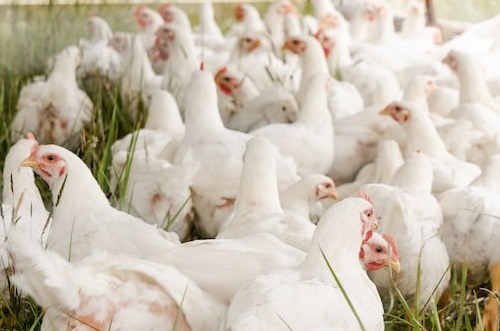W27: Chicken Update

In W27 in the chicken landscape, the Brazilian Association of Animal Protein (ABPA) reports that Brazilian chicken meat exports in the first half of 2023 reached 2.63 million metric tons (mmt), valued at USD 5.17 billion, an increase of 8.5% in volume and 9.3% in value compared to the same period in 2022. The increase was due to large chicken meat shipments destined for China at 390.7 thousand mt (+33%), Japan at 219.8 thousand mt (+8.5%), United Arab Emirates (UAE) at 200.1 thousand mt (-18.3%), South Africa at 189.7 thousand mt (+16.5%), and Saudi Arabia at 176.8 thousand mt (+8.4%). In Jun-23, Brazilian chicken meat exports totaled 446.2 thousand mt, valued at USD 887.5 million, up 3.2% in volume but down 6.7% in value. Furthermore, the Ministry of Agriculture and Livestock (MAPA) indicates that as of July 4, Brazil has recorded 58 cases of highly pathogenic avian influenza (HPAI). The latest case was confirmed in a wild bird of the Trinta-Réis-de-Bando species in the municipality of Aracruz in Espírito Santo. The Center for Advanced Studies on Applied Economics (Cepea/Esalq) reports that the Brazilian chicken market experienced stable quotations on July 5. The low chicken meat sales pace at the end of Jun-23, coupled with the increased supply of poultry due to increased accommodation, exerted significant downward pressure on poultry product prices across all monitored regions. In São Paulo, poultry prices remained stable at USD 0.92/kg at the farm level, and wholesale chicken maintained a price of USD 1.09/kg. Live chicken prices in São Paulo did not have a reference. In Santa Catarina and Paraná, prices also remained unchanged at USD 0.90/kg and USD 0.93/kg, respectively. Cepea/Esalq indicates that frozen chicken prices on July 4 remained steady at USD 1.24/kg, while chilled chicken prices dropped by 1.18%, closing at USD 1.21/kg.
The price of white feathered industrial chicken in Vietnam has continued to increase, reaching over USD 1.27/kg. White chicken weighing over 3.5kg/head from farms in Hoa Binh is being sold at USD 1.31/kg. In the southern regions, the price of white chicken ranges from USD 0.93/kg to USD 1.01/kg. Traders attribute the ongoing price increases to supply shortages. However, due to the short rearing cycle of white chickens, which is approximately 40 days, the supply is expected to be quickly replenished, keeping the price fluctuations moderate at around USD 1.27/kg. In contrast, the price of colored feathered chickens is highest in the North, reaching nearly USD 2.11/kg. Short-term colored chickens in the Southeast region are sold at a relatively lower price of less than USD 1.69/kg. Additionally, beautiful yellow-leg broiler chickens in Dong Nai are priced at approximately USD 2.96/kg, while Son Tay cane chickens in Hanoi farms are sold between USD 2.92/kg and USD 3.09/kg.
In W27, chicken meat retail selling prices in major cities in Indonesia increased by over 10% YoY. This increase is primarily due to the increased feed costs. Farmers intend to capitalize on these higher prices to recover the losses incurred from low prices at the end of 2022. Lastly, according to the head of the West Java Industry and Trade Service, the high broiler chicken prices in West Java in Indonesia are attributed to the El Niño phenomenon. Since 2023 Eid al-Fitr, the broiler chicken prices have consistently increased, reaching USD 2.96/kg in all 27 cities and districts in West Java. The El Niño impact has resulted in reduced productivity of corn shells in exporting countries, leading to price increases. Corn is a significant feed source for chickens in Indonesia, particularly in West Java. The Regional Government of West Java Province is coordinating with the central government and the National Food Agency to stabilize broiler chicken prices and ensure a return to normal levels. However, there will be no subsidy provided by the provincial government to reduce the price of goods in 2023, as the subsidy budget for this purpose was already disbursed before Eid al-Fitr.






